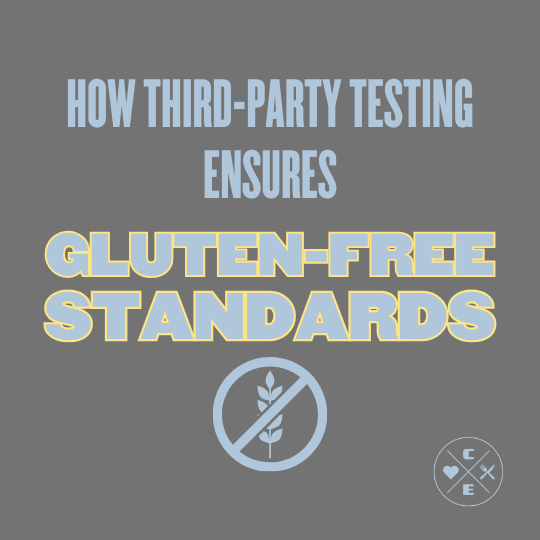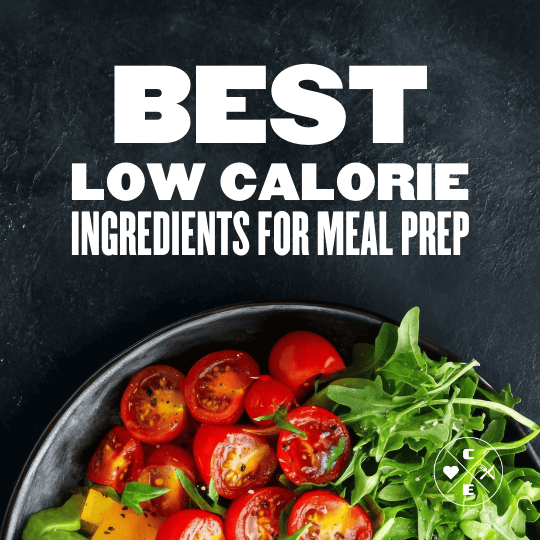
How Third-Party Testing Ensures Gluten-Free Standards
Jason Nista
Nutrition
6 minute read
Table of Contents
Third-party testing guarantees the safety of gluten-free products by verifying compliance with strict standards. For individuals with celiac disease or gluten sensitivity, this ensures food labeled "gluten-free" is safe to consume. Here's how it works:
- Gluten Testing: Products must contain less than 20 parts per million (ppm) of gluten, as per FDA guidelines.
- Manufacturing Reviews: Facilities are inspected for cross-contamination risks, proper cleaning, and staff training.
- Ingredient Verification: Ingredients are tested and tracked from suppliers to final packaging.
- Testing Methods: Labs use advanced techniques like R5 ELISA and LC-MS for accuracy.
This process protects consumers and helps manufacturers maintain consistent quality and trust. Companies like Clean Eatz Kitchen follow these protocols to deliver reliable gluten-free meals starting at $8.99 per meal.
The Gluten Free Certification Program: Start Clean, Stay Clean
Steps in Third-Party Testing
Third-party testing involves several steps and specialized tools to ensure products meet gluten-free standards consistently.
Product Sample Testing
Samples are collected following strict protocols, which include:
- Preparing and homogenizing the samples
- Collecting from multiple points within a batch
- Keeping samples stored at 35°F-40°F to preserve their integrity
- Maintaining detailed chain of custody records
Once the samples are prepared, advanced techniques are used to measure gluten levels accurately.
Testing Equipment and Methods
The R5 ELISA (Enzyme-Linked Immunosorbent Assay) method is widely used and approved by both the FDA and AOAC International. It can detect gluten proteins at levels as low as 5 parts per million (ppm). The process includes:
- Extracting proteins using specific buffers
- Analyzing the extracted proteins with R5 antibodies
- Measuring results using spectrophotometry
- Validating the data for accuracy
Some labs also use Liquid Chromatography-Mass Spectrometry (LC-MS) for confirmation. These methods provide precise measurements to verify compliance with gluten-free thresholds.
Gluten Content Limits
FDA guidelines require products to contain less than 20 ppm of gluten, though many programs enforce even stricter limits. Consistent results across production batches are essential, and any irregularities lead to immediate investigations and necessary corrections.
To ensure traceability, labs meticulously document test results, quality controls, calibrations, and sample tracking. This thorough documentation supports accountability and reliability in the testing process.
sbb-itb-1989a25
Manufacturing Standards and Controls
Manufacturing facilities adhere to strict protocols, verified through independent third-party evaluations, to ensure gluten-free production.
Production Facility Reviews
Certified facilities are subject to detailed inspections that assess:
- Production Equipment: Either exclusively used for gluten-free items or thoroughly cleaned between production runs.
- Air Handling Systems: Separate ventilation systems to prevent airborne gluten particles from contaminating gluten-free areas.
- Employee Training: Staff are trained on gluten-free protocols, including using protective equipment and following proper sanitization procedures.
- Documentation Systems: Facilities must maintain detailed records of cleaning and maintenance activities.
These inspections play a crucial role in maintaining gluten-free standards throughout the production process.
Supply Chain Verification
The supply chain is also rigorously monitored to ensure compliance. Third-party testing and verification ensure that every step meets gluten-free requirements:
- Supplier Documentation: Suppliers must provide proof that their ingredients are gluten-free.
- Certificate of Analysis: Each batch of ingredients is tested for gluten content before it enters production.
- Lot Tracking: Systems monitor ingredients from arrival to final packaging.
- Regular Supplier Audits: Annual reviews confirm ongoing compliance with gluten-free standards.
Here’s a breakdown of key supply chain verification points:
| Stage | Verification Requirements | Documentation Needed |
|---|---|---|
| Ingredient Receipt | Gluten testing (< 20 ppm) | Certificate of Analysis |
| Storage | Segregated storage areas | Inventory tracking logs |
| Production | Equipment validation | Cleaning verification records |
| Packaging | Label accuracy checks | Product specification sheets |
Cross-Contamination Prevention
To address cross-contamination risks, facilities implement robust protocols, including:
- Physical barriers to separate gluten-free areas.
- Time-separated production schedules.
- Color-coded tools and equipment.
- Regular environmental testing.
- Dedicated waste management systems.
These measures ensure that every step of the production process meets gluten-free standards, safeguarding the integrity of certified products.
Results of Third-Party Certification
Third-party certification plays a key role in ensuring safety and reliability in the gluten-free market, benefiting both consumers and manufacturers.
Consumer Safety Assurance
Third-party certification helps consumers trust gluten-free products by verifying:
- Compliance with FDA gluten limits
- Regular testing to maintain these standards
- Transparent sharing of test results
This process ensures that individuals with celiac disease or gluten sensitivity can rely on these products for their safety and well-being.
Benefits for Manufacturers
Manufacturers gain several advantages from third-party certification, including:
- Regulatory Compliance: Ensures adherence to FDA requirements
- Quality Control: Identifies and addresses potential issues through regular testing
- Market Access: Meets retailer demands for certified products
- Risk Management: Reduces liability with documented safety protocols
These practices not only support manufacturers but also reinforce consumer confidence in the products.
| Certification Benefit | Impact on Manufacturers | Impact on Consumers |
|---|---|---|
| Testing Protocol | Maintains consistent quality | Provides reliable safety |
| Documentation | Demonstrates legal compliance | Ensures transparency |
| Regular Audits | Detects issues early | Guarantees ongoing quality |
| Clear Standards | Offers production guidance | Simplifies product selection |
Case Example: Clean Eatz Kitchen Gluten-Free Meals
Clean Eatz Kitchen showcases how third-party certification works in real-world settings. Their approach includes:
- Thorough testing and verification of ingredients
- Dedicated preparation spaces to avoid cross-contamination
- Comprehensive staff training on gluten-free procedures
- Transparent labeling of gluten-free meals, starting at $8.99 per meal
Conclusion: The Impact of Third-Party Testing
Consumer Benefits
Third-party testing plays a key role in ensuring gluten-free standards are met, offering greater safety for consumers. The FDA's strict guidelines give manufacturers clear rules to follow, protecting individuals with celiac disease or gluten sensitivity. This allows people to make informed dietary choices without risking their health.
Certified gluten-free products provide:
- Consistent quality across all production batches
- Accurate labeling for easy identification
- Lower health risks for those with dietary restrictions
- Dependable options for meal planning
These measures not only build consumer trust but also encourage manufacturers to uphold higher quality standards.
Industry Quality Standards
For manufacturers, thorough third-party testing is crucial for meeting regulations and maintaining a strong reputation. Adhering to these protocols ensures consumer safety while enhancing a company's credibility in the market.
Clean Eatz Kitchen is a great example of this commitment. They follow strict gluten-free processes, regularly conduct third-party testing, and invest in staff training to ensure compliance.
As testing technology advances, the gluten-free industry will be better equipped to uphold and verify its standards. This benefits both manufacturers aiming for reliability and consumers seeking safe, high-quality products.
Related Articles
Best Low-Calorie Ingredients for Meal Prep
8 minute read
Calorie Density in Prepared Meals: What to Know
7 minute read
Low-Carb Meal Planning: Common Mistakes to Avoid
8 minute read



